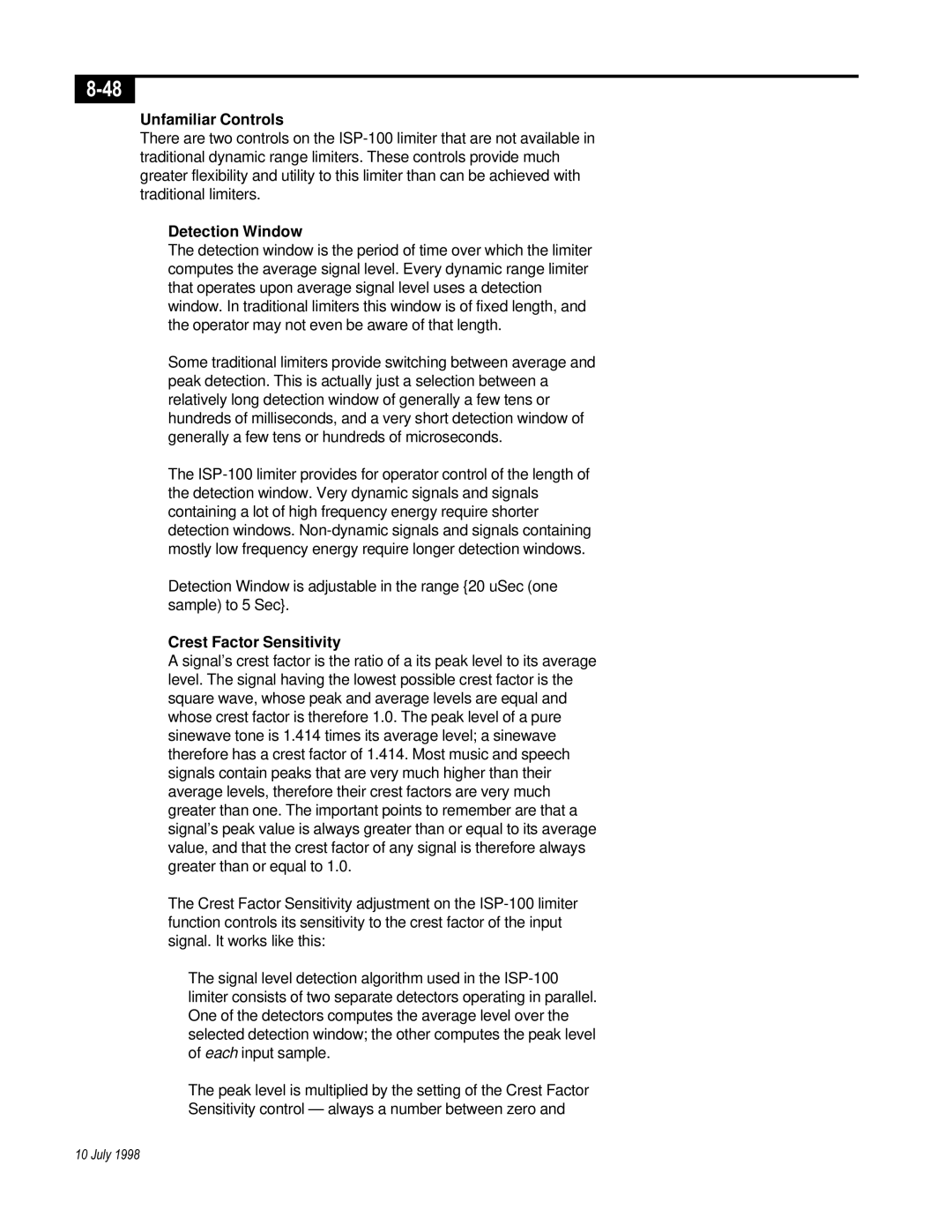Unfamiliar Controls
There are two controls on the
Detection Window
The detection window is the period of time over which the limiter computes the average signal level. Every dynamic range limiter that operates upon average signal level uses a detection window. In traditional limiters this window is of fixed length, and the operator may not even be aware of that length.
Some traditional limiters provide switching between average and peak detection. This is actually just a selection between a relatively long detection window of generally a few tens or hundreds of milliseconds, and a very short detection window of generally a few tens or hundreds of microseconds.
The
Detection Window is adjustable in the range {20 uSec (one sample) to 5 Sec}.
Crest Factor Sensitivity
A signal’s crest factor is the ratio of a its peak level to its average level. The signal having the lowest possible crest factor is the square wave, whose peak and average levels are equal and whose crest factor is therefore 1.0. The peak level of a pure sinewave tone is 1.414 times its average level; a sinewave therefore has a crest factor of 1.414. Most music and speech signals contain peaks that are very much higher than their average levels, therefore their crest factors are very much greater than one. The important points to remember are that a signal’s peak value is always greater than or equal to its average value, and that the crest factor of any signal is therefore always greater than or equal to 1.0.
The Crest Factor Sensitivity adjustment on the
The signal level detection algorithm used in the
The peak level is multiplied by the setting of the Crest Factor Sensitivity control — always a number between zero and
